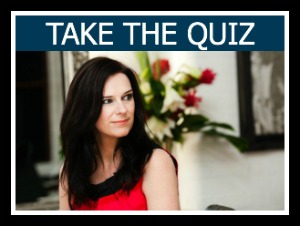Social media for sales and business growth
 I rarely make a bet, but now I’m going to. How many of you at first glance, thought that using social media wouldn’t take up much of your time? I bet the vast majority. Most people start with either Facebook or Twitter, so I'd wager that at some point you thought, ‘surely sending a few Tweets can't take long can it? The posts are limited to just 140 characters, right?' WRONG!!!
I rarely make a bet, but now I’m going to. How many of you at first glance, thought that using social media wouldn’t take up much of your time? I bet the vast majority. Most people start with either Facebook or Twitter, so I'd wager that at some point you thought, ‘surely sending a few Tweets can't take long can it? The posts are limited to just 140 characters, right?' WRONG!!!
Social media is a very time intensive process if you don’t handle it in the right way. The main problem with it is that social media happens in real time, like a conversation. Individual items might not take much time, but they happen all the time. As much as multitasking is applauded (especially by women, who use it the most), continuously going back to social media throughout the day can seriously hamper your overall productivity. Check out my post on multi-tasking for the low down!
So what’s the solution? Well it’s actually quite simple, and I genuinely speak from experience. You see, I too have suffered from social media overwhelm. And in order to get a grip on it, I've had to look at it in a very strategic and process orientated way. I know those words may sound too formal for many of you, but it's true. In order to avoid social media overwhelm and maintain productivity, the solution I found was to automate my social media marketing as much as possible. By taking care of my postings all at once, I freed up the rest of my day to work on other things. Then all I had to do was to check in at scheduled times so I could engage and respond to my prospects and customers, in other words – YOU!
So here's my advice. In order to ensure that you’re not spending all your time on your social media marketing, there are a few steps you should take:
1. Decide on your objective. Agree upfront what you want to achieve by using your chosen social media platforms. Only by setting the objective, can you measure the results and determine whether the campaign has been effective.
2. Develop a strategy. Start by determining which social media platforms to use, and how to use them. Each social media network has its own personality and its own function and you’ll need to decide which is the best for your market. You’ll want to focus your efforts on the social media platforms that will deliver the best return on your time investment. Sadly you can’t just copy the same content to every social media site without being penalized. You'll need to understand the merits of each platform and what makes them unique. Once you’ve got this sussed you can then decide when to post.
3. When to post. You’ll be scheduling your social media posts in advance, so you’ll need to set them for times when they’ll be most effective. You’ll therefore need to research when your followers are most likely to be online and engaging with your social media.
4. Choose the right automation tools. There are a number of tools that allow you to automate your social media marketing. Many are free, or at least offer basic functions for free with the option of adding more features through a paid account. Hootsuite is by far my favourite and you can use it to manage multiple social media platforms.
5. Consider your ability to engage and respond. Social media is a social platform and so you really don’t want your social media efforts to look automated or robotic. Social media is still about interacting with people so make sure you only schedule posts when you’re available to respond. Set up notifications to let you know when someone does reply to an automatic post so you can respond in a timely manner. This will set you apart from the crowd and enhance your relationships.
I know that by following these steps you can manage your social media marketing to full effect without suffering from social media marketing overwhelm.
As many of you know, I'm experienced in start-ups without capital, but please tell me about your experiences with social media marketing, as every business is unique. I'm so interested to hear how well you're doing with your social media. Please share your experiences and feedback on ways to solve this issue as so many face it in the comments below as I’d love to hear. Finally thank you, as always for reading and contributing here. If you found this useful, please share it with your friends and check out another blog I have on ways to build your authority for your brand using social media including how to generate a lead.
With love and gratitude – as always,












Follow Us